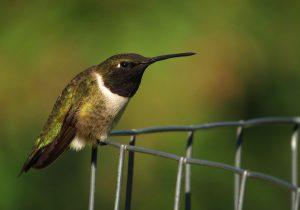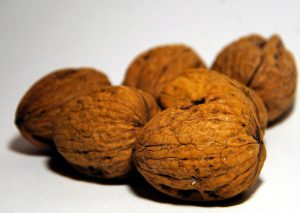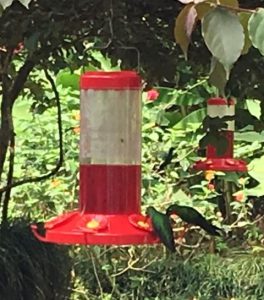Hummingbirds can surprise us in the plants that they visit for nectar. Just this past week, I sat out on my front patio area enjoying the evening. I looked over at my very large and hardy aloe plant in a large container that started flowering with tan flower spikes. While watching, in what looked like it came in at the speed of light, flew a small hummingbird that stuck his beak up into a couple of aloe blooms and then buzzed off. The thirsty hummingbird sped back and forth for about 30 minutes or more consuming nectar.

According to Hummingbirds of Florida, Schaefer and Huegel note that there are three hummingbirds in Florida, with 16 are found in the United States and 338 species of hummingbirds. Surprising, there are two hummingbirds you may find in Florida over the winter including the “black-chinned” hummingbird and the rufous hummingbirds.
Speedy Life Even in the Nest
You may most often see the ruby-throated hummingbird beginning perhaps in March with males appearing first followed by and females about a week or so later. Identify males from females and young based on white wing tips. Males lose their white tips when mature.

While many of us are used to seeing bird’s nests in trees or cleaning nests out of bird houses, the hummingbird nest profoundly small by comparison and is only about the size of a walnut! The nest seems pretty lush with eggs and young maturing in “plant down,” “lichen, moss, and bound with spider webs.” Eggs are only one-half inch long, and after four weeks (+20 days), the young leave! Seems that the speedy life of a hummingbird includes just a short time in a nest! While the young ate insects from their parents while nest feeding, after leaving the nest are mostly nectar feeders, and like parents feeding every 10-15 minutes.
While all hummingbirds are found in the Americas, they may over-winter in Mexico or South America. When visiting Costa Rica from end of February into March a few years ago, there were lovely metallic green hummingbirds that were being fed at one of the large public gardens. Huge numbers of them would buzz in, stopping to feed, and then buzzing out again.
Making Feeders Safe for Hummingbirds

If you use a feeder, use 1 part sugar to 4 parts water, then boil it and cool. This equates to wildflowers. Never use honey as it will be lethal to a hummingbird. You do not need to use colored water but can use feeders with red to attract them, considering that they also visit flowers that are not red. Because of Florida’s heat, you should clean and replace feeders every 3-5 days. Do not use bleach. Place them somewhere that rain does not dilute the tube and use an ant trap to keep the pesky insects out of your sugar mix!
Plants for Hummingbirds
Hummingbirds can visit many plants including trees and shrubs you may find at Hummingbird Plants at https://edis.ifas.ufl.edu/entity/topic/hummingbird_plants. There are some plants that you can include in your garden to inspire hummingbirds to visit (without the feeder).
Powderpuff (Calliandra spp.) is a non-native small tree, growing in Florida from USDA hardiness zones 9b-11. It prefers full sun, is drought tolerant, and flowers with pink to white flowers from fall through spring. Another small tree, buttonbush (Cephalanthus occidentalis) is hardy from zones 8-11, and it has white spring flowers. Buttonbush prefers moist soil. Coral bean (Erythrina herbacea) tolerates drought and grows from zones 8-11. It prefers full sun and has scarlet tubular flowers to attract hummingbirds. Other plants you can plant include azaleas, salvias, fire bush (Hamelia sp.), and red “firecracker” plant (Russellia sarmentosa). For more information on hummingbirds and lists of plants, read “Hummingbirds of Florida” at https://edis.ifas.ufl.edu/publication/UW059.
 0
0
